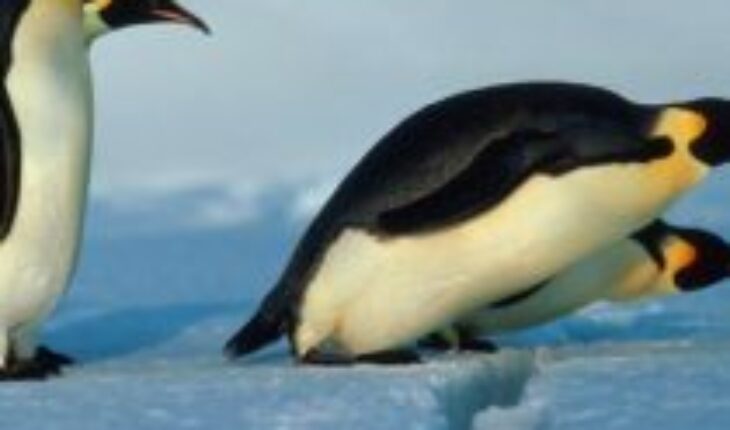The emperor penguin has recently been included in the list of threatened species because the sea ice in which they live is melting due to climate change and global warming, the Endangered Species Act (ESA) of the United States announced on Tuesday (25.10.2022), one of the strictest environmental laws in the world.
Ice is essential for the survival of the emperor penguin – the tallest of its kind at almost a meter on average – because that is where it breeds, forages for food, raises its chicks and where it can feel safer from marine predators, such as leopard seals or killer whales.
Emperor penguins only lay one egg. When it hatches, the parents alternate to care for the chick. But if he fails to develop his feathers in time, then he will not be able to swim and will die. That’s why ice is vital.
By 2100 the species could disappear
Specialists predict that 99% of the world’s population of this species will become extinct by 2100 if the carbon pollutant emissions that cause global warming and climate change are not significantly reduced.
“Climate change is having a profound impact on species around the world and addressing it is a priority for ESA,” said U.S. Fish and Wildlife Service Director Martha Williams.
“The inclusion in the emperor penguin’s list serves as an alarm bell, but also a call to action,” he added.
What does this mean in practice?
The fact that ESA has included the emperor penguin in its list of threatened species implies that federal agencies will have to reduce their volumes of carbon pollution that directly endanger the environment of these birds.
Likewise, the decision seeks to promote the financing of conservation and research programs, as well as international cooperation, regardless of whether the species is not found in the United States.
“We should be inspired by the penguins themselves”
“Emperor penguins, like many species on Earth, face a very uncertain future, which depends on people working together to reduce carbon pollution,” said Stephanie Jenouvrier, associate scientist and seabird ecologist.
“We should be inspired by the penguins themselves; only together can they cope with the harshest climate on Earth (Antarctica), and only together can we face a difficult climate future,” he added.
The Endangered Species Act (ESA) signed in 1973 has already added other species to its list, such as polar bears, two species of seals and more than 20 different corals.
Follow us on





